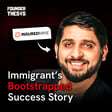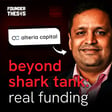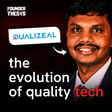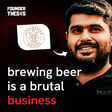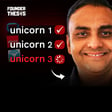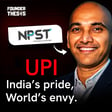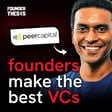
From Gensol to BluSmart: Anmol Singh Jaggi’s roller-coaster Journey
Can an electric ride-hailing startup take on Ola and Uber in India and actually reach profitability? In this episode, we uncover how Anmol Singh Jaggi is building BluSmart Mobility, India’s all-electric cab service, into a potential EV unicorn reshaping urban mobility.
Anmol Singh Jaggi’s entrepreneurial journey began in college, scaled with a public IPO at Gensol Engineering, and has now pivoted to solving the toughest problem in ride-hailing: profitability. With BluSmart, he’s betting on an asset-heavy EV fleet model, charging infrastructure as a moat, and a no surge, no cancellations customer promise. In this candid conversation with Akshay Datt, Anmol reveals the hard lessons of building during India’s funding winter, his contrarian bet against the “asset-light” VC playbook, and why EV fleets and charging hubs could be the real moat in the future of ride-hailing. This episode is packed with insights on unit economics, funding, policy shifts, and market disruption that every founder, operator, and investor should hear right now.
Key Highlights:
- How Anmol Singh Jaggi built Gensol from dorm-room startup to IPO
- The founding story of BluSmart and its all-EV ride-hailing model
- Lessons from scaling during India’s funding winter and COVID shocks
- Why owning EV fleets and charging infra may beat asset-light models
- The no surge/no cancellation promise as a customer-first growth lever
- Policy, capital cycles, and the macro future of EV mobility in India
Subscribe to the Founder Thesis Podcast for more deep-dives with India’s top founders.
Follow Akshay Datt on LinkedIn for exclusive insights and behind-the-scenes content.
Visit founderthesis.com for more inspiring founder stories.
YouTube Chapters
00:00 - Anmol Singh Jaggi’s Startup Journey
05:20 - From Carbon Credits to IPO at Gensol
13:15 - Why BluSmart Chose EV Ride-Hailing
21:40 - Breaking the Asset-Light VC Myth
29:55 - BluSmart’s No Surge, No Cancellation Promise
38:20 - Building EV Charging Infrastructure as a Moat
46:30 - Scaling BluSmart During India’s Funding Winter
55:10 - India’s EV Policy & Market Shifts
01:02:40 - Competing With Ola & Uber in India
01:09:15 - What’s Next for BluSmart and EV Mobility
SEO Tags
Anmol Singh Jaggi, BluSmart, BluSmart Mobility, EV startups India, India EV revolution, electric vehicle startups India, EV funding trends India, ride hailing EV India, EV charging infrastructure India, Ola vs Uber vs BluSmart, BluSmart no surge pricing, future of mobility India, clean mobility startups India, EV ride hailing business model, EV fleet ownership India, BluSmart IPO unicorn, funding winter Indian startups, EV disruption India 2025, Gensol Engineering IPO, Anmol Jaggi founder story, EV policy India
